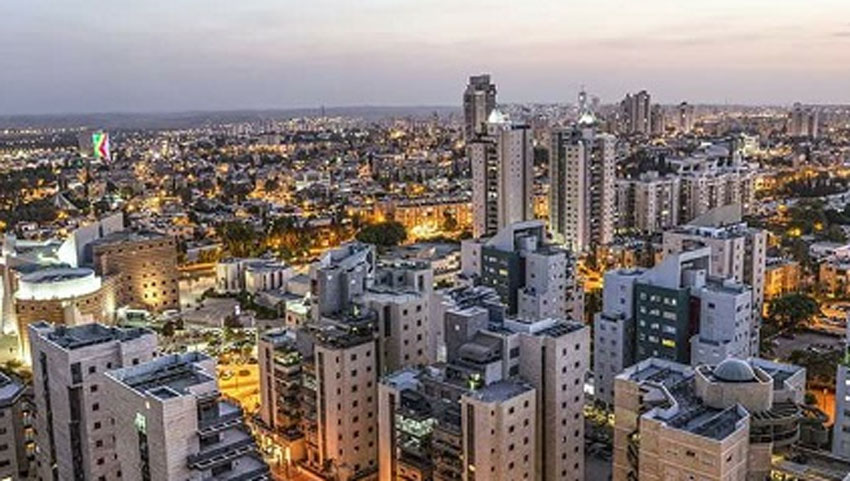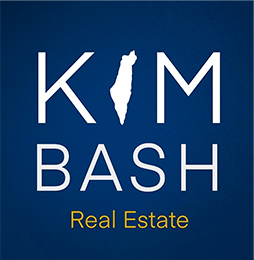TZFAT
Tzfat is not only one of Israel’s holiest cities, it is also the highest city in the Holy Land. Set in the dense pine forests of the Upper Galilee, overlooking Tiberias and the Sea of Galilee, Tzfat is a delicious blend of ancient grandeur and modern-day resort. For thousands of years, the ancient city of Safed was conquered and reconquered – always changing hands. Said to have been founded by one of Noah’s sons after the Great Flood, the city was inhabited by the local Semetic populations throughout the years. Josephus mentions Tzfat as Sepph, a fortified Jewish town in the Upper Galilee. Today, after years of conflict ranging from the Crusaders to the Mamlukes to the British, Tzfat survives – as pretty, vibrant and mystical as ever!
Zichron Yaakov
Zichron Yaakov is located upon Mount Carmel, with magnificent views across the Coastal Plain to the Mediterranean. It is a tranquil town, offering breathtaking views across Israel’s Mediterranean Coast and beyond. Zichron’s main street, known as Midrahov, is now a pedestrianized zone lined with cafes and boutique artistic stores. Being the original street of the settlement, many of the houses are of great historic value and have plaques outside that tell the story. Zichron Yaakov is also home to the Carmel, Tishbi and Binyamina wineries who also have visitor centers, which bring lots of tourists during ”normal” times. Besides beautiful homes, Zichron also has wonderful neighborhoods, good schools, shuls, and proximity to places of employment. Zichron has a vibrant community with a healthy diverse mix of people. Olim feel a sense of fitting in the community almost immediately upon arrival. There is also a Haredi community split into two areas, Hazon Ish and Ramat Tzvi, which both have English-speaking families.

Be’er Sheva
Be’er Sheva is Israel’s fourth-most populated city located in the south near the Negev Desert. The city is a mix of Sephardi, Mizrahi, and Ashkenazi families as well as diverse population of Jews from India, Russia, Ethiopia and now the United States. The game of chess is very popular in Be’er Sheva so much that it’s become Israel’s national chess center, with more chess grandmasters per capita than any other city in the world. Be’er Sheva is also home to Ben-Gurion University of the Negev. This city also serves as a center for Israel’s high-tech and developing technology industry. There is a lot of new construction, schools, shuls of all kinds, modern shopping centers, and walking paths, with low cost housing options.
Pardes Chana
It’s not exactly in the north of the country, nor in the center. Maybe that’s what makes Pardes Channa in the northern Sharon region a place where each person can be whatever he or she wants. On the one hand, the town has filled up in recent years with city people from Tel Aviv, Ramat Hasharon and other cities in central Israel who came here for the dream of a country home, a garden and a family dog—despite the early morning traffic jams on Israel’s coastal road. On the other hand, Pardes Hanna has become a place for beatniks and artists who have discovered a place to create, to launch initiatives, and enjoy a rich community life. Amid this modern-day influx, let’s not forget the veterans of ‘Moshava HaYekkim’ (1929), who grew up under the patronage of Baron de Hirsch (“The Known Benefactor”), and of Karkur (1913), who preserved the character of Arab landholders from the Ottoman period. Here we see a dynamic mix of old and new, longstanding and new young residents, artists and common people. Something in this human patchwork seems to be going quite well. This town with its seemingly endless tiny roads and its 43,000 residents somehow still refuses to become a city. Maybe it’s due to the prestige of remaining a ‘local council’, or maybe due to the bureaucracy involved.One way or another, Pardes Channa (named for Hannah Rothschild, the niece of Baron de Hirsch) is marking 90 years since its founding and 50 years since its union with Karkur in 1959. “So why does everyone call it “Pardes Canna” rather than “Pardes Channa-Karkur”? Irit Oren, director of the Veteran’s House, explains: Both communities have strong sentiments for their past and neither wants to surrender its classic name. Pardes Channa was once considered the “spoiled younger sister” due to the philanthropy of the Baron while Karkur’s roots go back to an English association founded on capital and entrepreneurship that, surprisingly, succeeded during hard times in Israel. Neither really wanted the other, but just like today’s political rivals in Israel they understood that two is stronger than one.
Haifa
Haifa is Israel’s third-largest city, beautifully set on the slopes of Mount Carmel facing the Mediterranean Sea. There are a number of great things to do, including the Bahai Gardens, German Colony, as well as a number of top museums. The city is part of Israel’s so-called “Silicon Wadi”. High-tech companies around the Matam technology park, where Google, Apple and IBM have offices. Popular among English speaking olim are the neighborhoods of Ahuzza, Upper Hadar and Neve Shaanan. Ahuzza areas are fairly affluent neighborhoods and are home to both religious and secular communities. Near to Haifa University, makes this area desirable to international students and expats who make this neighborhood their home. The Upper Hadar is situated halfway between The Central Carmel neighborhood and the Hadar shopping district. Property prices are lower and all major bus routes, the Carmelit route and in close walking distance to shopping, this is an ideal location if you do not have your own car. The Upper Hadar offers wonderful views of Haifa Port, the bay and Galilee. Neve Shaanan is a large residential and commercial center with a selection of suburban shops, supermarkets and restaurants. This area is a very popular choice for English speaking, young immigrant, observant Jewish couples. Join Devorah Benarroch from KIm Bash Real Estate to meet some Anglo’s who are now living in Haifa, Israel. Community & Real Estate information, by Kim Bash
Ramot Bet
In addition to being one of the biggest neighborhoods in Jerusalem, Ramot (Hebrew for “heights”) is also one of the most diverse. The six sections of Ramot differ wildly from one another, just as the 40,000 people who live there come from a wide variety of backgrounds. What they share is the panoramic view, because Ramot was built hundreds of meters above sea level. Ramot is one of the newer Jerusalem neighborhoods, as construction first began in the 1970s. The different sections of Ramot were built by different architects and for differing purposes. Ramot Aleph (or Ramot One) was built for families of moderate income. The result is an area of attached, tiered apartment buildings, which together resemble a giant beehive.
Residents of these apartments tend to be Orthodox Jews with large families, even though the apartments themselves are not that big. In sharp contrast, Ramot Bet (Ramot Two) boasts rows of spacious private homes. Living in a private house, and in particular an unattached house, is a luxury in Jerusalem, where the majority of people live in apartments.
Ramot Bet is therefore known as a prosperous neighborhood, populated mainly with a mix of Modern Orthodox and secular Jews. Many English-speaking immigrants choose to live in Ramot Bet, since the lifestyle is similar to that which they left behind. The remaining four neighborhoods of Ramot present variations of the spectrum between these two extremes.
Ramot Six, for example, is comprised of private homes, but most of these are attached and not as large as the houses in Ramot Bet.
Harish
Harish is located on green hills close to the Iron interchange on Highway 6, at a height of 110 meters above sea level, and a driving distance of 10 minutes from Pardes Hanna-Karkur.
The city’s origin is in Kibbutz Harish, established in the ’80s and abandoned in the early ’90s .After the kibbutz’ evacuation, the Ministry of Construction and Housing laid down preliminary infrastructure for the development of the city of Harish. Additionally, as part of the plan to unify local authorities, a unified local council was established for the communities of Katzir and Harish, despite the relatively large distance between them.
In recent years, especially after the paving of Highway 6, the region saw a significant increase in the demand for housing among young couples and families, who found a home in the surrounding kibbutzim and the various communities in the Pardes Hanna-Karkur area. Harish’s proximity to Highway 6, its location in the heart of the green Iron hills that enjoy continuous air flow and low humidity levels relative to the coastal plain, created renewed interest in the town’s development.
On September 01, 2016, with the establishment of four primary schools and 20 kindergartens and day care centers, the first year of studies opened in Harish. On September 2018, more than 2,600 children attended the city’s 4 schools and 42 kindergartens. Secondary schools, as well as other schools and kindergartens are expected to open later, following the pace of population growth.
During 2017, the main commercial avenue opened (Derech Eretz Ave.) which today includes a supermarket, a variety of shops, sick fund branches, fast food, cafés and more. During 2021, the number of citizens living in Harish reached 25,000.
As a new city, Harish has become an exceptional solution in Israel for young couples and families looking for quality housing at affordable prices, in close proximity and with accessibility to the center of the country.

